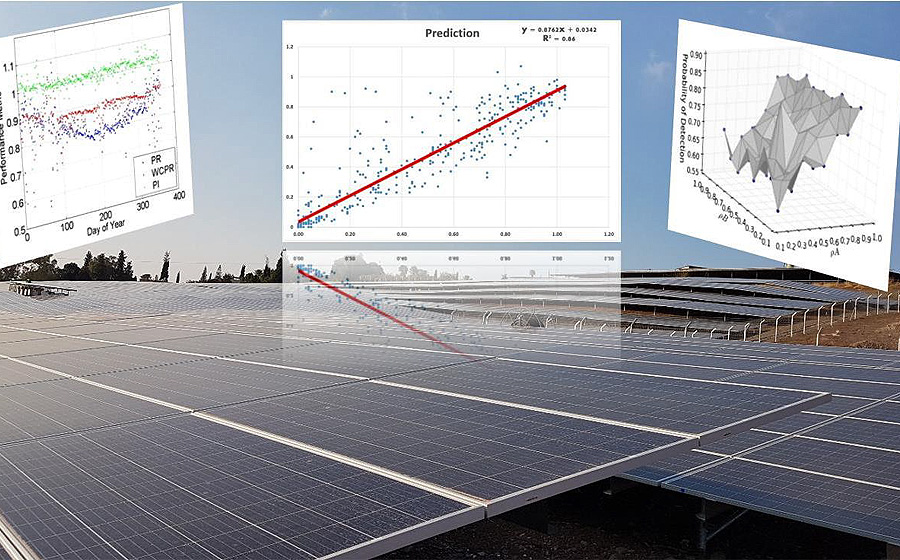
The performance and reliability of PV electricity generation is becoming markedly more important, as the contribution of solar PV to overall electricity generation increases around the world, particularly in Australia. A recent IEA report shows how international studies have found that the key to managing the increasing level of PV energy flowing into the grid is timely access to quality data, made more predictable by machine learning algorithms.
Managing the influx of solar energy into the electricity grid requires a large amount of real-time data from PV suppliers, with a high level of predictability. This requirement is particularly difficult to meet where there is a high percentage of PV generation from small rooftop systems, which are often not monitored. In addition, large PV systems are not often equipped with the level of sophisticated performance monitoring that grid managers require.
Machine learning and other PV fault identification methods are comprehensively reviewed in a new IEA Photovoltaic Power System report ‘The Use of Advanced Algorithms in PV Failure Monitoring 2021’.
The report provides an introduction to PV performance monitoring and a survey of fault detection algorithms and their applications. The study found that the primary trends in PV system statistical performance monitoring are based on artificial intelligence (AI) principles. The best results come from a machine learning training strategy that uses training data based on real-time testing data.
Dr Jonathan Dore from Ausgrid, formerly Head of Product Innovation at Solar Analytics, notes, “This research provides a comprehensive analysis of failure detection methods, which can help identify underperforming systems, as the first step to rectifying faults. The scale of deployment of PV now provides a wealth of data almost unimaginable when the first solar systems were deployed. Such data volumes enable modern machine learning methods to compare systems to their own historical performance and to that of their neighbours, helping to discover anomalies or mild performance deficiencies that would have gone undetected in the past.”
Full Report: ‘The Use of Advanced Algorithms in PV Failure Monitoring 2021’
About the APVI
The Australian PV Institute is a not-for-profit, member-based organisation which focuses on data analysis, independent and balanced information, and collaborative research. Our objective is to support the increased development and use of PV via research, analysis and information.
The APVI promotes solar through its live solar mapping platform [http://pv-map.apvi.org.au], the national solar research conference and Australia’s participation in two International Energy Agency (IEA) programs – PVPS (Photovoltaic Power Systems) for solar photovoltaics and SHC (Solar Heating and Cooling), concerned with new solar thermal products and services.
www.apvi.org.au







